May 2, 2025
Get Started
What Is Domain Warm Up & Why Is It Important

When someone mentions warming up an email domain, they aren’t referring to heating things or setting fire to servers. It’s about establishing a good reputation for a new domain in the email space. It’s a term to describe a strategic process – where new domain addresses are established by gradually increasing the volume of messages they receive. Domain warm-up sends emails from a new (or cold) email domain and gradually increases send volumes to establish a positive email reputation.
Why Should You Warm Up Your Domain?
The purpose of domain warm-up is to improve your domain reputation and gain ESPs’ trust so all your emails can be delivered right into recipients’ inboxes (and not be blocked by spam filters). Whenever you start sending emails from an entirely new email domain with zero reputation, ISPs and ESPs (Email Service Providers) can get suspicious about it and prevent your domain from delivering more messages at once until you “prove” that you are a reliable email sender.
Once ISPs have historical data about your domain and email activity, they will allow you to send more messages to a larger audience—or vice versa, throttle your email volumes if you start to have a lousy domain reputation. Domain warmup helps to create a positive email reputation for your new domain by gradually sending a larger and larger number of messages over several weeks until your domain is ready and adequately “warmed up.”
What Impacts Domain Reputation?
A domain’s reputation can be influenced by many factors, such as:
Delete rate: The number of recipients that moved your emails into their trash folder.
Spam report: The number of spam complaints that your domain receives.
Unsubscribe requests: People who unsubscribed from your email list.
Email content: The quality of your:
Messages
Usage of spam words
Grammar mistakes
The trustworthiness of links (if included), etc.
Engagement rate: The number of people who opened, replied to or forwarded your emails.
Blacklists: The reputation of a domain address can suffer if it is put on one of the popular email blocklists.
Bounce rate: The number of emails not delivered to recipients’ inboxes.
And many, many other factors… It’s essential to understand that not all of these components carry the same weight. For example, suppose some people unsubscribe from your email list. In that case, the domain reputation won’t change that much – on the other hand, having many spam reports can severely damage the reputation of your domain.
Why Warm Up Domain for Cold Email Campaigns?
While knowing how to warm up a domain can be valuable in any scenario, it’s particularly beneficial in the case of sales and cold email campaigns. Cold outreach is an art; warming your domain can significantly improve your success rate. The nature, frequency, and volume of such messages can make it challenging to come across as a credible sender – especially if your address is new and unestablished to the recipient. That’s why many marketers spend extra time preparing their domains before launching a cold campaign to avoid deliverability problems.
Warming up the domain and other email deliverability strategies can ensure you establish a good reputation as a sender and that the hard work that goes into first-contact messages isn’t wasted. It’s essential to have a company domain trusted by recipients if you want to succeed with your outreach campaigns.
Domains That Affect Deliverability

The DKIM signing domain holds your public DKIM key, which is used to decrypt the DKIM signature and authenticate your messages. Signing your messages with your domain builds your domain’s reputation faster, improving your deliverability.
DKIM-Signature: v=1; a=rsa-sha1; c=relaxed/relaxed; s=pm; d=pm.mtasv.net; h=Message-ID:MIME-Version:From:To:Date:Subject:Content-Type; bh=SL7rCnlli8A9zsnT4JjD6bAHzFs=; b=uE5Y5PlSBOCGIaVxf7IeN/9Fe+iNSyOu/Ly0d5Q/WWPRDd3q6RrRA7f8kOrxv/JcVNijEeAIjN3CeyNmx1ACEMcmVoGvNCdLdhiMPIQTh1DODLTR3E2nzJgzvbwAe4gkqdnSG+x1DobA+lhKbcfKAAMDkxO1pV08iaNY44ytQqI=
Return-Path Domain: The Unsung Hero of Email Authentication
The Return-Path domain is the email address which bounce responses are sent. But it’s also used by receivers for SPF authentication. To build your reputation faster, it’s recommended that you have a custom Return-Path that matches your domain.
Return-Path: <pm_bounces@pmbounces.postmarkapp.com>
From/Reply Address: The Friendly Email Address
The from/reply address is the “friendly” address in our inboxes, often matching the domain used in the reply-to address. It should identify your brand to recipients, so encourage them to add it to their contact list for improved deliverability.
It’s also recommended that you add a DMARC policy to this domain. This policy, combined with custom DKIM and Return Path, helps protect your domain’s hard-built reputation.
Content URLs: The Links We Can’t Ignore
URL content includes the links in the content of your message itself, including:
Any third-party link tracking
File hosting
In general, URLs negatively affect delivery only when they’re observed to have some deceptive or malicious purpose. It pays to remember which third parties are linked in your content.
<a href="https://wildbit.com">Wildbit</a> Philadelphia, PA, 19106
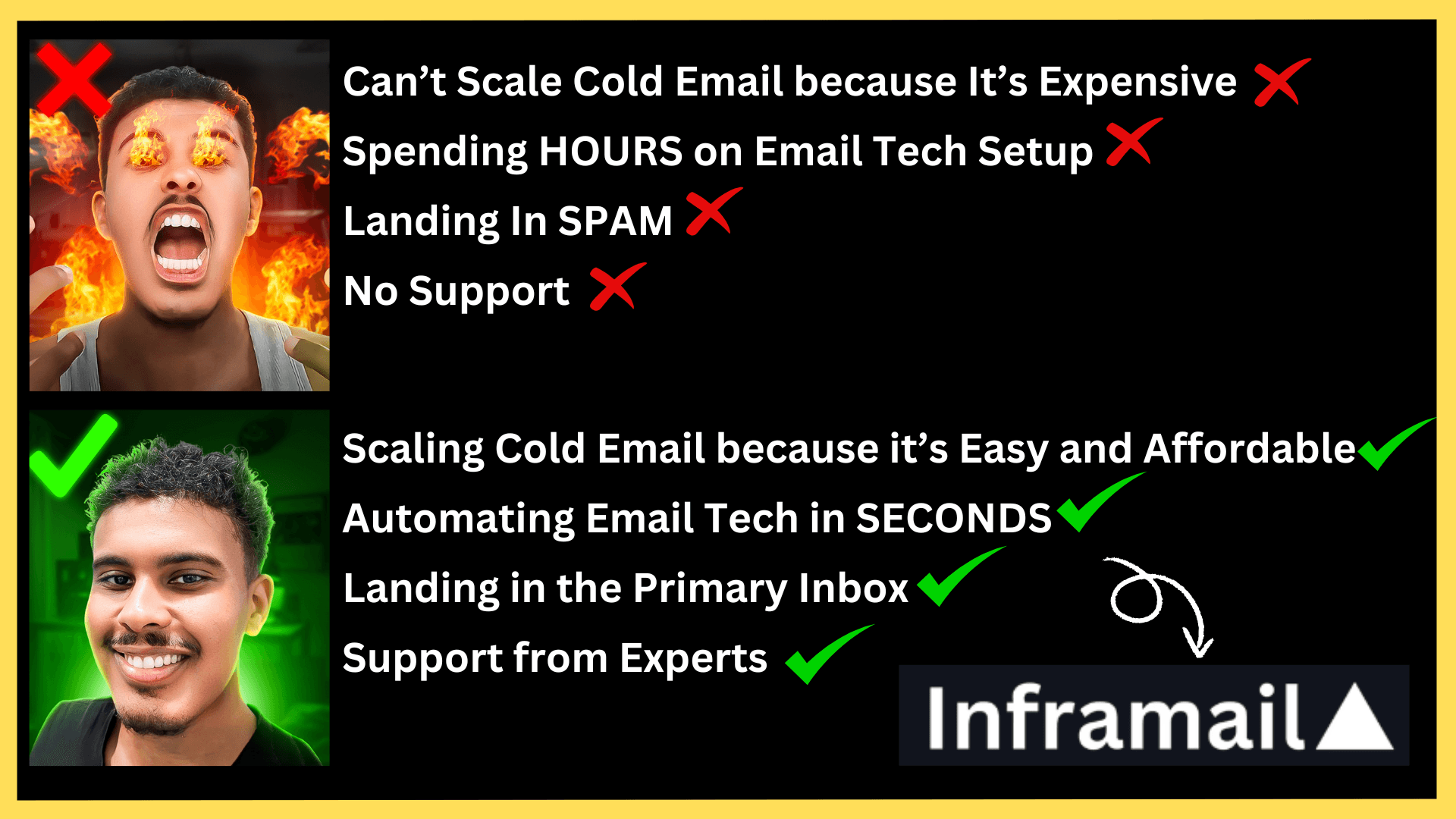
Related Reading
• Automated Lead Generation
• Email Prospecting
• How to Generate B2B Leads
• How Many Emails Can You Send Before Considered Spam
• Best Time to Send Cold Emails
• How to Cold Email
• Best Cold Email Templates B2B
• Email Outreach Best Practices
• Email Outreach Strategy
• Hunter.io Alternatives
• Seamless AI Competitors
• How Long Should a Cold Email Be
• ZoomInfo Alternative
• Cold Email Lead Generation
How to Warm Up Email Domain

Brand Association: The Importance of Consistent Domain Branding
When transitioning to a new domain, getting the trust of the primary mailbox providers (MBPs) is essential to ensure your email deliverability doesn’t suffer. One of the best ways to do this is to establish a clear association between your new and old domains. If MBPs can associate your new domain with your pre-existing brand, they will trust it more.
Consistent Branding
Include recognizable brand elements in your emails, such as logos and consistent messaging, to reinforce your brand's legitimacy. Try using the same email templates you used with my old domain. In addition, your domain should redirect to my website, like other domains your business uses.
Transparent WHOIS Records: Make Sure Your Domain Looks Legit
WHOIS is a widely used internet record listing that shows who owns a domain and how to contact them. It is essential to ensure your domain's WHOIS records are as clear and transparent as possible by confirming you do not have any WHOIS masking or Private Domain Registration through your domain provider.
Building Trust Through Transparency
This information helps build trust with MBPs, showing that your domain is associated with a legitimate and accountable business. If your domain’s WHOIS records match the contact information on your website, it is much easier for MBPs to identify and trust the new domain.
Tread Carefully with Unusual Top-Level Domains (TLDs)
In a URL, the top-level domain (TLD) is after the first dot in the domain name. For example, .com, .net, and .org are the most popular TLDs. Avoid using uncommon TLDs, such as .club, .live, or .market.
Both MBPs and recipients view these suspiciously and likely have major deliverability issues. To avoid unnecessary scrutiny, stick to more conventional TLDs like .com. These are typically more expensive domains to buy but provide better deliverability.
Exercise Patience Before High-Volume Campaigns
Resist the urge to launch high-volume marketing campaigns immediately. Waiting at least 30 days for your sending volume allows your domain to establish a solid sending reputation.
Monitor with Google Postmaster Tools
We recommend using Google Postmaster Tools to monitor your domain's sending reputation. This free tool shows you how your domain reputation is doing in the eyes of the world's largest MBP, Gmail. Gmail will tell you if your domain reputation is:
Red
Yellow
Green
This can give you the confidence to increase the sending volume or to stop sending altogether..
Here’s a quick list of the most popular ESPs and their sending limits.
Email Service Provider | Sending Limit (Per Day) |
Gmail (Free) | 500 |
Gmail (Google Workspace) | 2000 |
Outlook (Free) | 300 |
Microsoft 365/Office 365 | 10000 |
Zoho (Free) | 50 |
Zoho (Paid) | 300 |
Zoho (Custom) | 2500 |
GoDaddy | 250 |
RackSpace | 10000 |
Yahoo! | 500 |
BlueHost | 150 (per hour) |
DreamHost | 100 (per hour) |
Yandex. mail | 500 |
HostGator | 12000 |
Amazon SES | 10000 |
Proton Mail (Free) | 150 |
Proton Mail (Plus) | 1000 |
Proton Mail (Professional/Visionary) | unlimited |
AOL | 500 |
Mailgun | 300 |
SendGrid (Free) | 100 |
SendGrid (Essentials) | Up to 100,000 per month |
SendGrid (Pro) | Up to 1.5 million per month |
Sendpost (Starter) | 10,000 per month |
Sendpost (Growth) | 600,000 per month |
Sendpost (Scale) | 3 million per month |
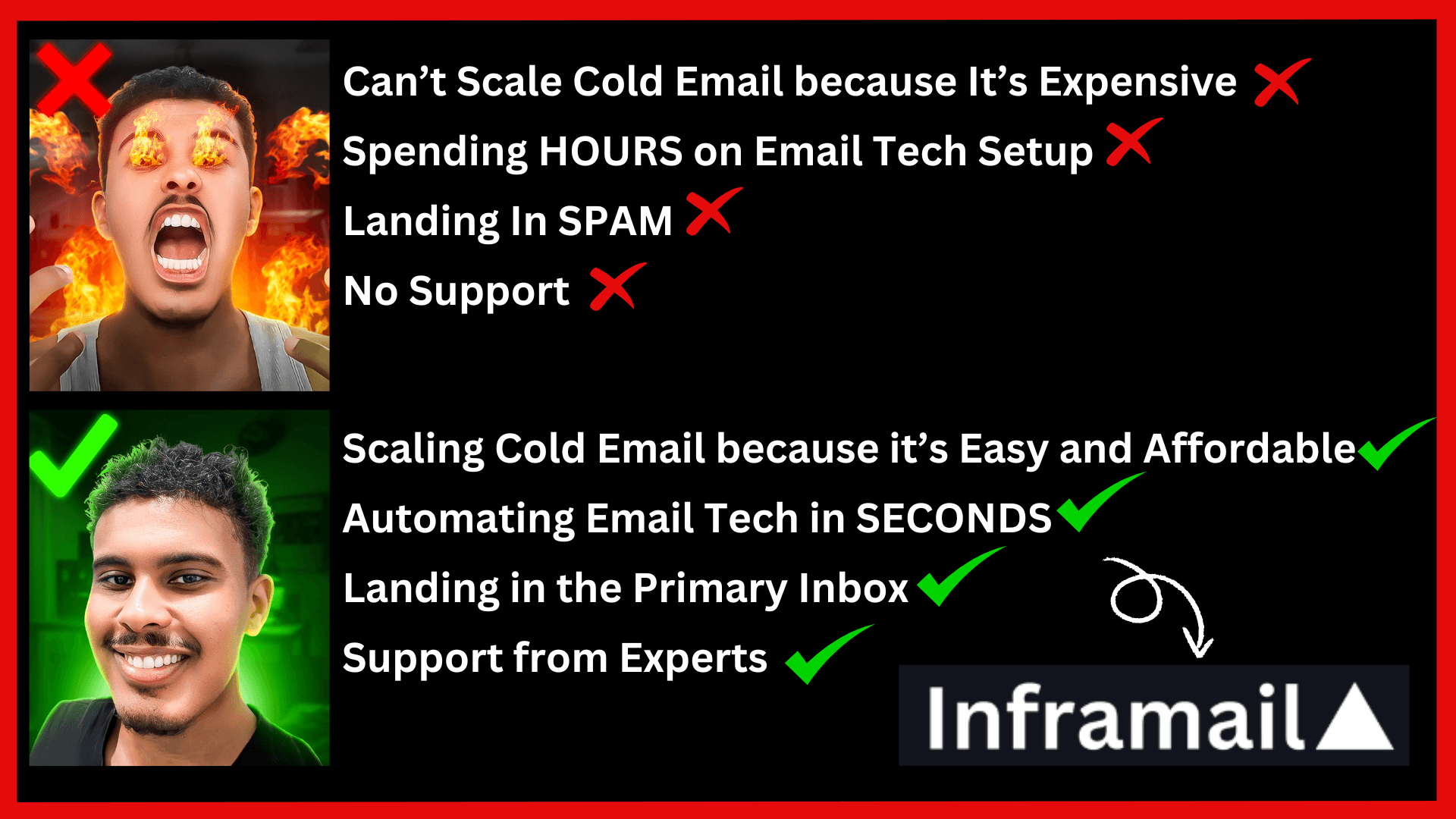
Related Reading
• Best Cold Email Software
• How Long Should a Cold Email Be
• B2B Cold Email Response Rates
• How to Improve Email Deliverability
• Unlimited Email Hosting
• Email Testing Tools
• Best Email Deliverability Tools
• Sales Email Automation Tools
• Email Scraping Tools
• Best Sales Prospecting Tools
• Email Warm Up Tools
• Email Personalization Tools
• Mailscale Alternatives
• Mailforge Alternatives
• Best Email Warm Up Tools
• How to Send an Email to a Prospective Client
• Freight Broker Email Template
• Cold Email Manifesto
• How to Warm Up an Email Address
• How to End a Cold Email
• How to Cold Email a Recruiter
• Cold Email vs Spam
9 Email Domain Warming Best Practices

1. Know Your Sending Limits
Every email service provider (ESP) has a limit to how many emails you can send per day. Check these limits before warming up your email domain and developing an action plan. Depending on how many emails you wish to send per day, consider considering upgrading your ESP. We do not recommend sending email blasts from a free Gmail or Outlook account because scammers tend to use these, and you will be flagged. It’s also important to understand that many ESPs equate the “number of emails sent” with the “number of recipients.” In short, trying to circumvent the limits by BCC-ing all of your recipients on a single message won’t work.
2. Implement Email Authentication
Email authentication can indicate to ISPs that your domain is reliable and can be trusted. Authentication allows receiving servers to quickly verify your emails and prevent hackers from spoofing your account. It also shows that you prioritize your customers’ well-being and don’t want them flooded with spammy messages. The email authentication consists of 3 parts (and it’s best to take the time to complete all of them):
Sender Policy Framework (SPF). This DNS record allows you to specify authorized domains to send messages on your behalf.
Domain Keys Identified Mail (DKIM) – A DNS record that adds encryption to your outgoing emails so the servers can see that your email content hasn’t been tampered with.
Domain-based Message Authentication, Reporting, and Conformance (DMARC) – A DNS protocol that uses SPF and DKIM to assist ISPs in validating your emails’ authenticity.
3. Improve IP Reputation
A positive IP reputation is equally important as having a good domain one. If your IP address gets a bad rep, all of your emails will be blocked or simply end up in the spam folder – and your domain reputation will suffer along the way, too. ISPs are doing everything they can to protect their users from spam and malicious content, so if you have a less-than-stellar IP reputation, your emails might not get delivered to your subscribers.
4. Avoid Spammy Words
Spam filters are sensitive to your emails’ content, especially for risky words that attract attention and mislead the readers. Due to this fact, try to avoid phrases like “FREE,” “75% OFF”, “BUY RIGHT NOW,” etc., since it will just increase the chance that your emails will end up in spam folders. The same can be applied to click-bait titles or claims in your emails that promise a prize but, in reality, lead to something completely different.
5. Provide High-Quality Content
Writing a good and relevant email copy does not need an explanation. If your email content seems like a scam, recipients won’t click on any of your promotion links (and probably won’t open my messages ever again in the future). With scammy content, I will probably get a lot of spam reports – which will hurt my domain warm-up process and reputation overall.
Improving Email Copy for Better Engagement and Conversions
Although creating a good email copy is a little bit of an art and requires some marketing skills, there are a few ways how you can improve your email content immediately:
Personalize the message: Whether it is the recipient’s name or location, writing a personalized email will keep the reader engaged and more willing to read my full message.
Keep the optimal length: Depending on the type of email, I suggest creating a shorter (or longer) version of my content. In cases like sales emails or lead generation, nobody likes to read tons of text (especially if it is just a reminder of some product promotion or discount). On the other hand, newsletters or marketing emails tend to have slightly longer content.
Make it readable: Keep sentences short, divide them into small paragraphs, and use an easy-to-read font that users can quickly scan.
6. Maintain Regular Conversations
Creating positive engagement and getting responses is a huge plus for your domain reputation but that is just half the work. When getting answers to my messages, I try to keep the conversations flowing and reply to users who write back. Regular conversations are a strong signal for email service providers that my email account is trustworthy, leading to a quicker warmup of my email domain.
7. Clean Your Email Lists
Regularly cleaning your email lists will help you save resources and keep your open rates and CTRs high (since you will stay only real email addresses that real people use). Cleaning your email lists can also help you eliminate the users who are not interested in my content anymore (and probably won’t read my emails even after 5 or 10 email campaigns).
Maintaining a Clean Email List for Improved Deliverability and Domain Protection
To get rid of invalid email addresses, spam traps, or soft bounces, you need to use tools like EmailListVerify that can automatically “catch” and delete these types of addresses for you. Regular checking and cleaning of your email lists can help you to:
Save money (and time): With a “healthy” email list, you can be sure your messages will be delivered to real people and won’t be wasted on error email addresses or bots.
Protect your domain reputation: Every email list occasionally receives invalid email addresses, soft/hard bounces, or spambots.
That’s why regular verification of emails in my list can protect my domain and IP reputation and keep them safe from unwanted email addresses.
8. Switch to a Dedicated IP
If you’re operating on a shared IP, you may want to consider transferring your information to a dedicated IP to have more control over your reputation. Shared IPs and their reputation can also be negatively impacted by other people using them. Even if you try to warm up the IP address correctly, spammers or scammers who use the given IP for their malicious email activities could easily damage its reputation. Switching to a dedicated IP address will help you solve this issue and give you complete control over its reputation (+ domain reputation).
9. Use Warm Up Tool
Warming up a new email domain is a pretty straightforward process but also very time-consuming:
You have to prepare engaging content
Keep up with conversations
Continuously send more and more emails over a long period
That is why it is always a good idea to use tools that can warm up your inboxes.
How Long Does It Take To Warm Up an Email Domain?

You can warm up a single email address in 3 to 4 weeks. Various factors influence this timeline, including:
Domain reputation
Email volume
Engagement
Why You Should Use a Warm-Up Service
You’d use a warm-up service to warm up your email, as doing it manually is a lot of work. The cool thing about a warm-up service is that it works on autopilot once set up. Connect your email address to the service, turn on warm-up, and return to working on more critical tasks, like creating campaigns.
Keep Your Warm-Up Process Going!
A rookie mistake many people make is turning off the email warm-up process after the initial warm-up phase. Email warm-ups should always be kept up during outreach to maintain good deliverability. Why? When doing email outreach, the engagement you get on your email can be low. For your sender reputation’s sake, you need the engagement you get on your warm-up emails to balance everything out. Let your email warm-up service work tirelessly behind the scenes to protect your sender’s reputation.
Factors That Influence How Long Email Warm-Up Takes
Domain Age: As a general rule, an email address from a new domain will take longer to warm up than an email address from an older domain unless…
Domain Reputation: If your domain has a bad reputation, it will take longer to warm up the domain and any associated email addresses.
Engagement: Getting more engagement will warm up your email faster. Note: The engagement levels must be natural. It’s not expected to get a reply to every email I send, especially not for a new email address. So, make sure my engagement pattern looks natural.
Best Practices: Use a warm-up tool that follows email warm-up’s best practices. If you stray from a proven warm-up pattern, you risk prolonging the warm-up process.

16 Best Email Warmup Tools & Services
1. Inframail: Revolutionizing Cold Email Infrastructure
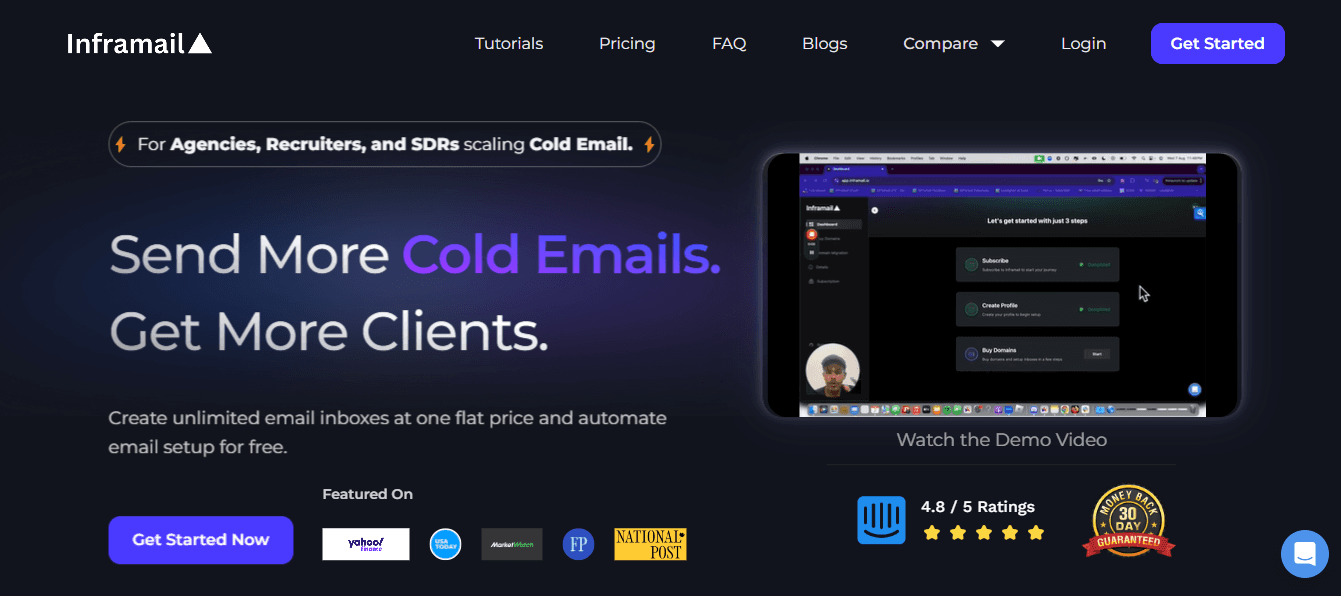
At Inframail, we are revolutionizing cold email infrastructure with unlimited inboxes at a flat rate.
We provide:
Microsoft-backed deliverability
Dedicated IP addresses
Automated technical setup
This helps customer outreach efforts efficiently like:
Agencies
Recruiters
SDRs
The main benefits of using our service:
Automated SPF, DKIM, and DMARC setup
Dedicated email servers for each user
16-hour priority support daily
Unlike traditional providers that charge per inbox and leave you wrestling with technical configurations, Inframail streamlines the entire process. We handle the complex infrastructure setup while you focus on reaching more prospects.
InfraMail provides the robust email infrastructure you need without the usual technical headaches and per-inbox costs, whether you're:
An agency looking to scale outreach
A recruiter connecting with candidates
An SDR driving sales
Start buying domains now and set up your email infrastructure today with our email infrastructure tool.
2. Warmup Inbox: Your Cold Email Reputations New Best Friend

Warmup Inbox is an email warmup service that can help you increase your campaigns' deliverability and improve your email account's reputation over time. The tool provides a network of over 20,000 inboxes that your email account can utilize for the warmup process. Warmup Inbox is pretty easy to use – after you sync your inbox with the platform, the tool will interact and engage with your account. This process includes:
Replying to your emails
Marking them as necessary
Pulling them out of the spam folder, etc.
Besides the basic warm-up process, the Warmup Inbox also offers many other valuable features, such as:
Monitoring the sender’s reputation
Alerting you about any issues with your reputation
Checking the spam rate of your emails
Checking whether your email is present on any blacklist
The email account setup is pretty straightforward – you can sync your inbox into the Warmup Inbox platform and the tool will automatically start communicating with its network of real users.
Warmup Inbox supports all major providers, such as:
Gmail
Yahoo!
Outlook
Zoho and others
3. Mailwarm: The Email Warmup Tool with a Custom Schedule
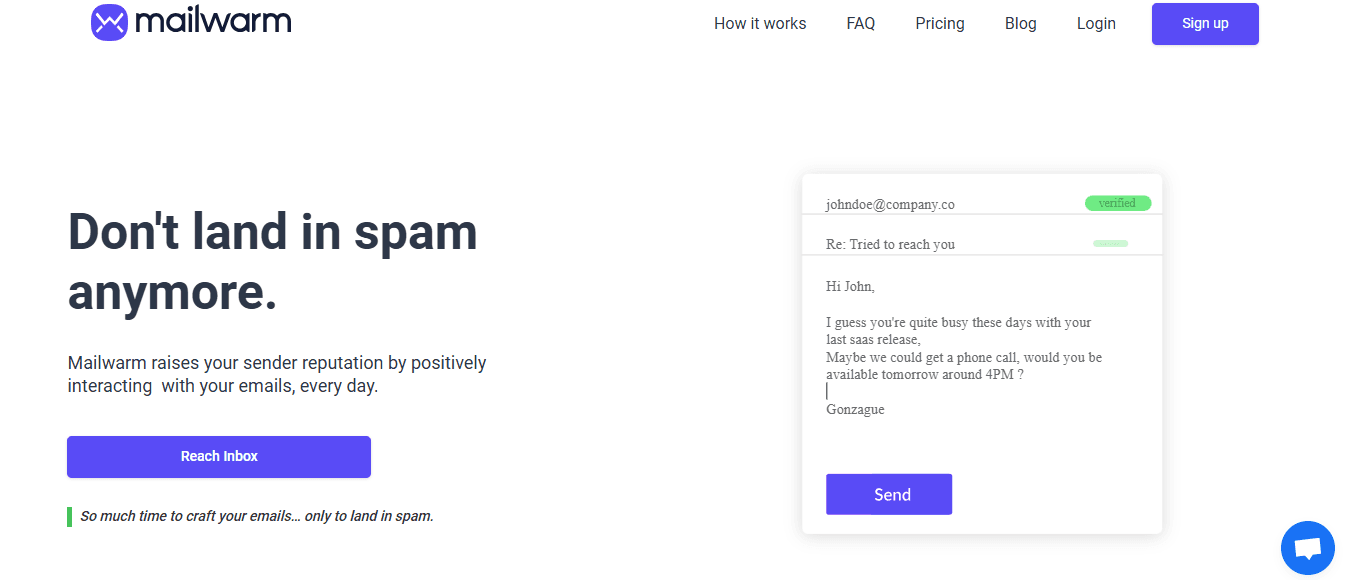
Mailwarm is a pretty easy and straightforward tool: once you set up your email account for the service, it will start sending and replying to your emails and gradually warm up your account. One of the excellent features of this tool is that you can set up your schedule for the warmup process and control when the inboxes should automatically start sending and replying to emails.
Besides the warmup schedule, Mailwarm also performs other actions within the inbox, such as:
Retrieving emails from the spam folder
Marking emails as “important,”
Opening up incoming emails
4. GMass: An All-in-One Solution for Gmail Users

GMass is a service that provides a decent email warmup tool, among other exciting things. The company offers eight valuable tools heavily focused on Gmail (since it wants to serve as an all-in-one solution for Gmail providers). With GMass, you can monitor the reputation of your domain, check out statistics about your opening rate, or even start a massive cold email campaign.
This vast email conglomerate has its limitations. Since GMass is all about Gmail services, it might not work well for people who need to warm up their email accounts for other email providers.
5. Mailreach: The Very Basic Email Warmup Tool

Mailreach is a standalone email warmup tool designed by a French company in 2020. The tool is straightforward– once your inbox is set up and connected to Mailreach, it will automatically start sending and replying to emails. Besides the generic warm-up, it also provides a few exciting features, such as:
Testing the emails and evaluating your spam score
Checking your email accounts in blacklists
Detailed deliverability reports
A slight downside (at least to some people) is that Mailreach email replies are not generated by real people (so they might seem a little suspicious to ESPs in some cases).
6. Lemwarm: The First Email Warmup Tool
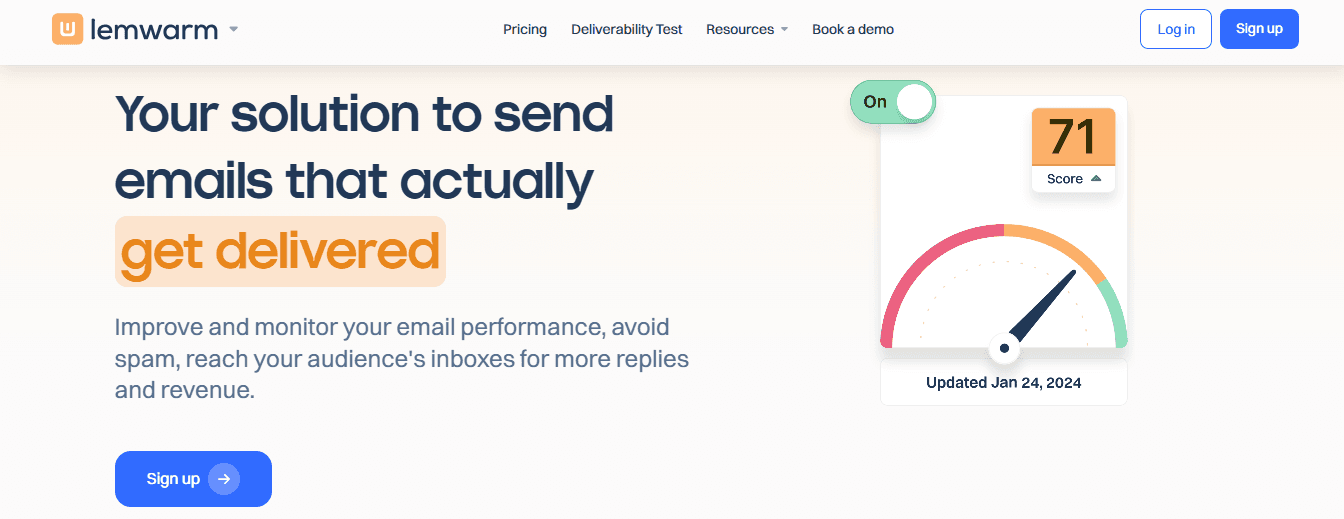
Lemwarm is a well-established (though a bit old-school) email warmup tool – it was the first email warmup service ever to appear in the market. Lemwarm allows you to control the exact number of warmup emails you want to send from your inbox daily. Once you set up your account and start the warming process, the tool will automatically start sending emails on your behalf within its network of inboxes (and create replies generated by real people).
7. Folderly: The AI-Powered Email Deliverability Tool
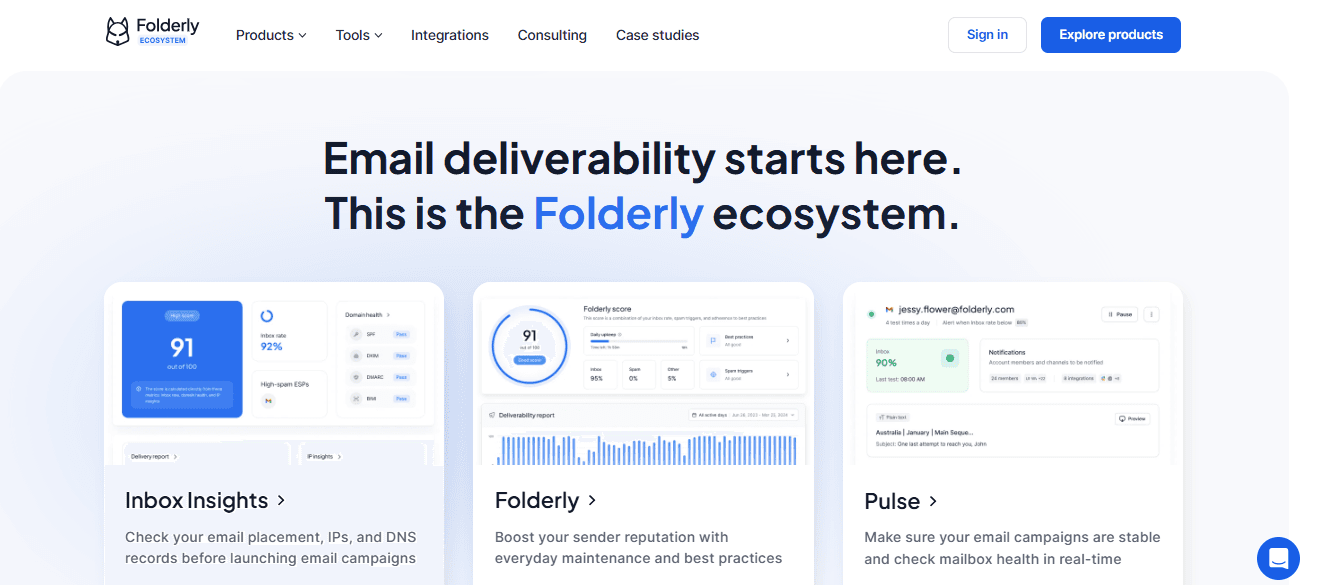
Folders is an AI-powered email deliverability service focusing on more than just the warm-up process. It uses machine-learning systems that help email inboxes interact with emails like real people do – by creating and replying to emails with the following:
Meaningful content
Opening
Marking
Interacting with messages, etc.
Besides the generic warm-up process, Folderly also offers to run massive email outreaches and email analyses for companies that need more than just adequately warmed up in boxes.
8. Reply.io: An All-in-One Sales Engagement Platform
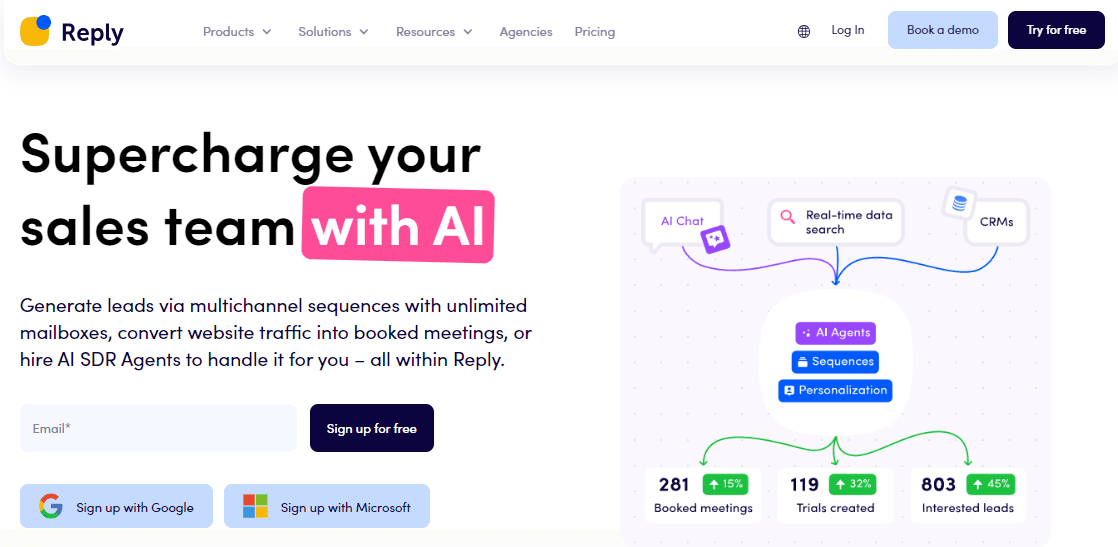
Reply is an all-in-one sales engagement platform that provides a simple warmup add-on. Reply’s Email Warm-Up tool is based on a network of actual inboxes that communicate with each other. It utilizes peer-to-peer sending without any free or temporary email accounts, making the warm-up process safe and reliable.
With this network of users, Reply can create a positive engagement by interacting with your emails – it opens and replies to your emails or marks them as necessary. Unfortunately, the warmup tool is available only for Outlook and GSuite.
9. InboxWarm (by OutreachBin): A User-Friendly Warmup Tool
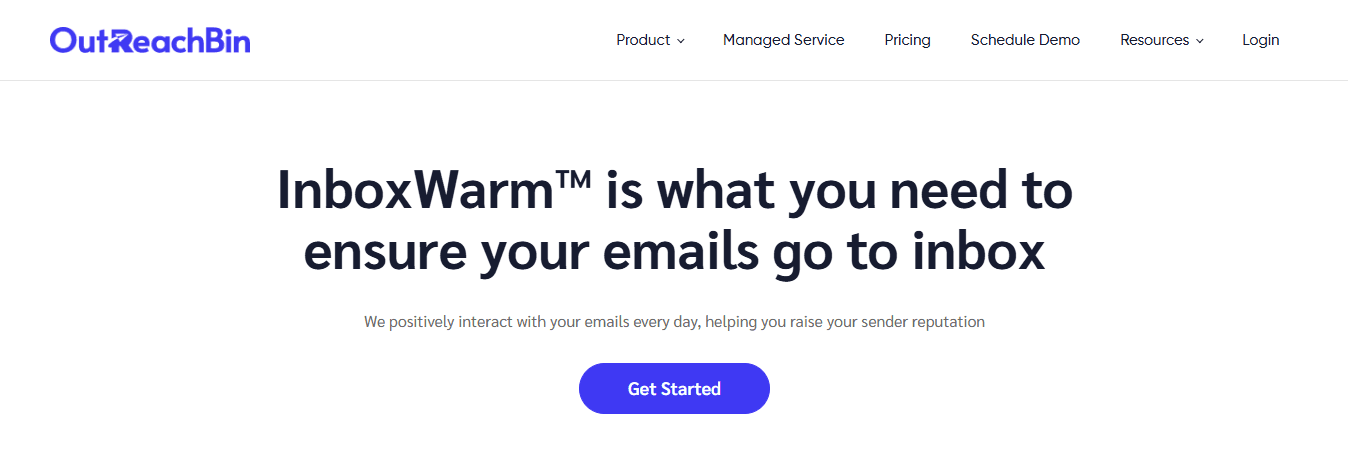
InboxWarm is an email warm-up tool that is part of OutreachBin’s platform. The tool uses an advanced algorithm that ensures human-like interaction with emails within its peer-to-peer network of users. Once you connect your email account to OutreachBin’s platform, the inbox will become part of its network and gradually improve its reputation by communicating with other accounts.
InboxWarm is very user-friendly and can be easily used even by absolute beginners. Although the service claims that you can warm up your account in only 2 weeks, it also recommends that you continue to warm up your account to maintain your email reputation.
10. Warmbox: An Email Warm Up Tool with AI Capabilities
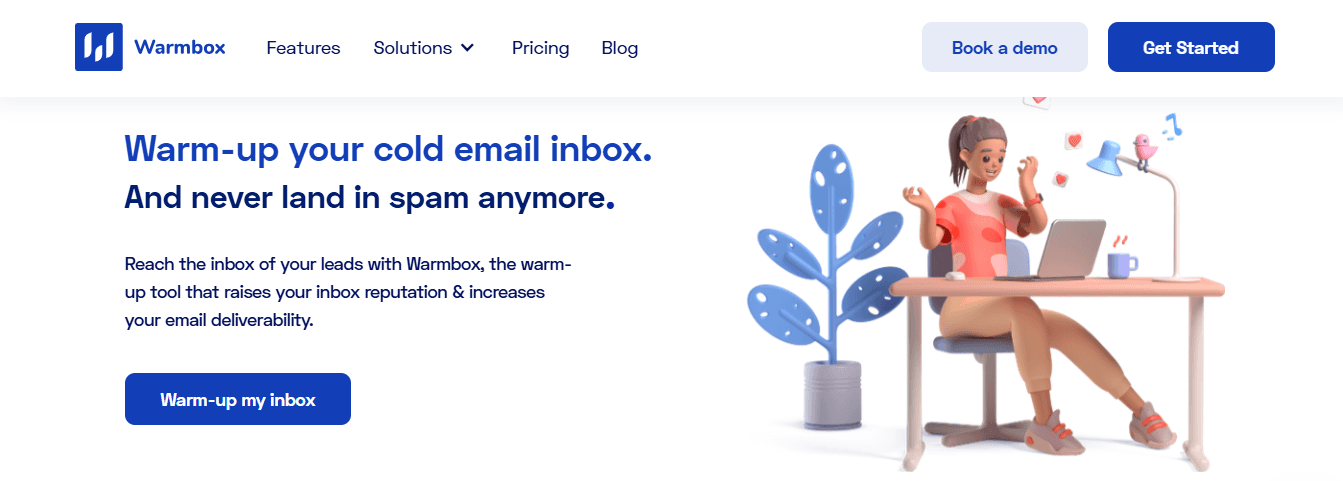
Warmbox is a standalone warm-up tool that can increase your email reputation by automatically sending emails from your account and interacting with them. Similarly to other popular warm-up tools, Warmbox uses its private network of more than 35,000 inboxes that communicate with each other and gradually increases the reputation of each email account connected.
One of its unique features is its GPT-3 AI algorithm for each inbox, which helps generate and send unique emails between accounts (and, therefore, create natural conversations between accounts). It also provides detailed monitoring tools and analytics to show you reports about your reputation and overall warm-up progress.
11. Woodpecker: A Free Tool for Cold Email Users

Woodpecker offers users a free warm-up tool included in the subscription for its whole service. The setup for the warm-up process is effortless and straightforward – all you need to do is connect to the platform and turn on the warm-up process with just one click. You can also choose whether you would like to warm up your whole email domain or just one email address you plan to use for your campaigns.
Woodpecker does precisely what you would expect from a proper warm-up tool. Automatically:
Sends warm-up emails
Pulls them out from the spam folder
Marks them as necessary, etc
Besides ramping up your email reputation, you can also use Woodpecker to recover your reputation if it starts to decrease or to keep your deliverability high all the time.
12. AutoWarmer (by QuickMail): A Warmup Tool with Human Language Capabilities
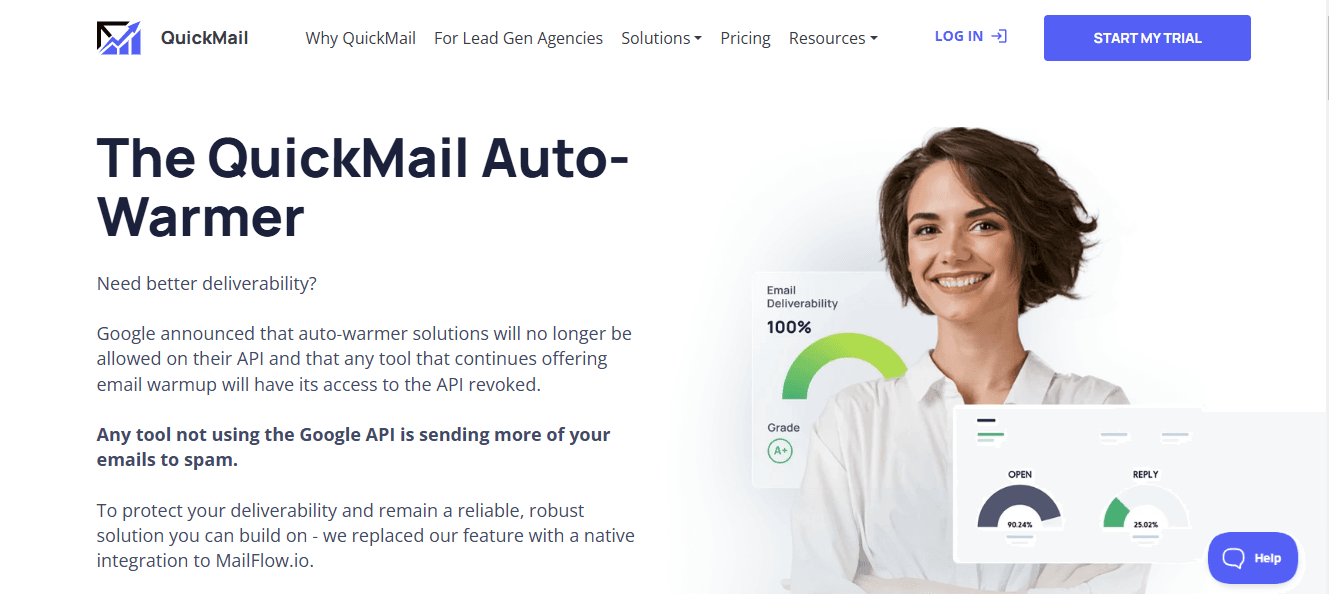
AutoWarmer is a warm-up tool that is integrated into QuickMail’s email platform. The tool can improve the sender’s reputation by positively engaging your inboxes. It:
Auto-replies to your emails from its network of inboxes
Pulls the emails out of the spam folder
Slowly increases the reputation of your email account.
A nice feature of AutoWarmer is that it can generate emails that contain business language that you usually use daily. Autowarmer claims it can improve your domain reputation within the first 1 – 2 weeks (as opposed to a regular warm-up process that may take 3 to 4 weeks).
13. Mailflow: An Essential Email Deliverability Solution
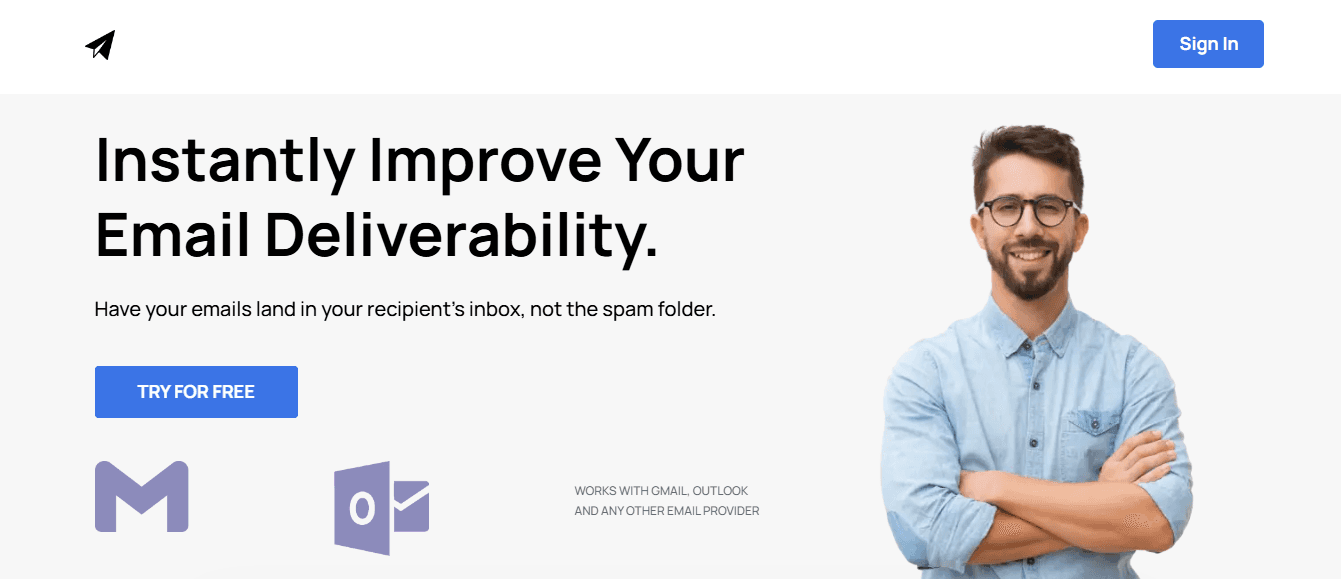
Mailflow offers an essential solution for strengthening your email deliverability through full-fledged features like:
SPF & DKIM Checks
Blacklist Monitoring
Its real-time monitoring capabilities ensure that users maintain an optimal sender reputation.
Features:
SPF & DKIM checks: Verifies email authenticity to ensure your emails are trusted.
Blacklist monitoring: Monitors your status on email blacklists to protect your sender reputation.
Email auto warmer: Gradually improves your email reputation, ensuring better deliverability.
14. TrulyInbox: A Powerful Email Management Tool

TrulyInbox is a powerful email management tool designed to declutter your inbox and improve productivity. It streamlines your email experience with features like:
Intelligent categorization
Snooze options
Integration with popular email platforms
Whether tackling a flooded inbox or striving for better organization, TrulyInbox simplifies digital communication.
15. Omnisend: A Comprehensive Email Marketing Platform
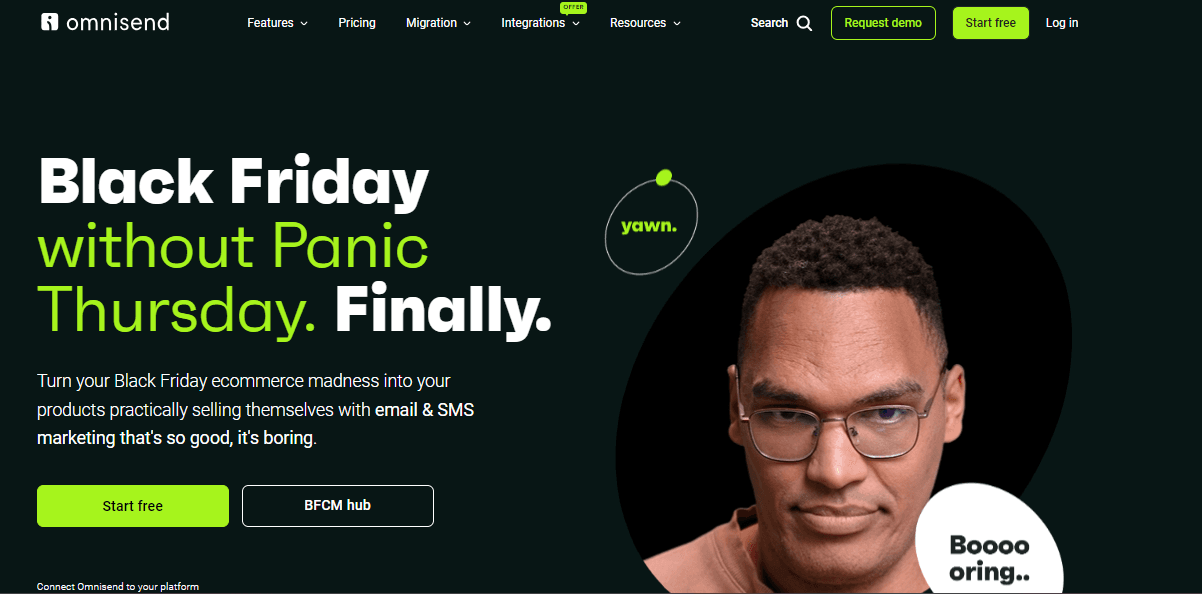
Omnisend offers a comprehensive email marketing platform with a built-in email warmup service for new domains and email addresses.
Here’s a closer look at what Omnis end's free email warmup tool has to offer:
Features Automated warmup schedules
Integration with Omnisend’s email marketing suit
Real-time monitoring and analytics
AI-powered content suggestions
16. Allegrow: An All-in-One Warmup Solution
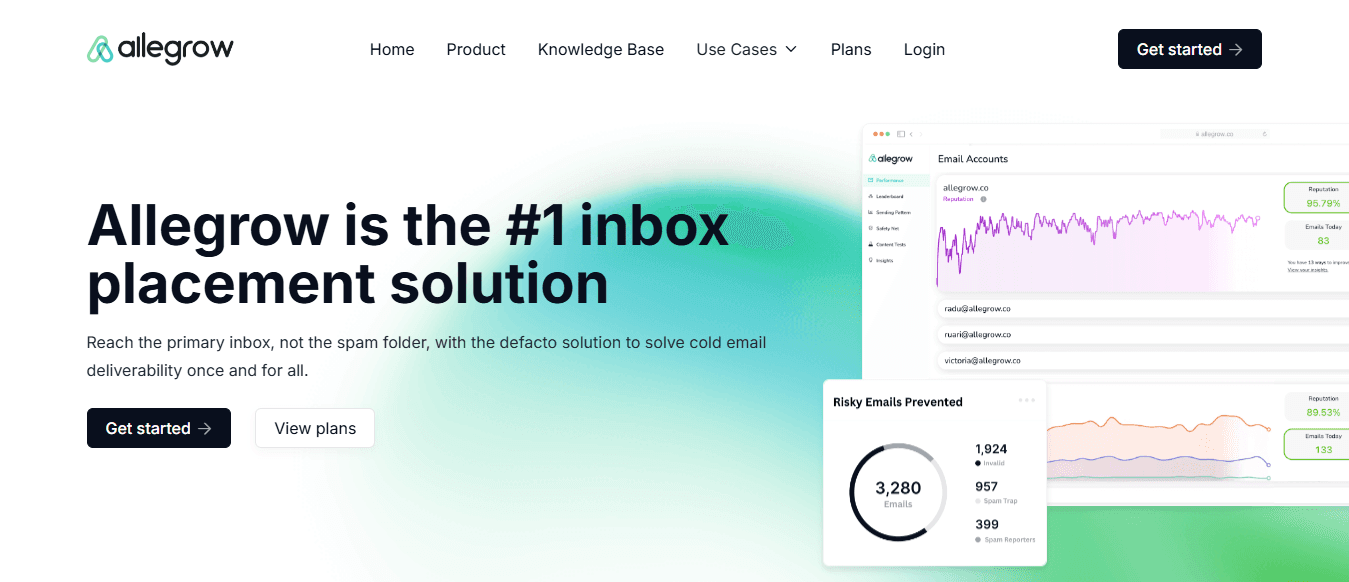
Allegrow offers an all-in-one solution for email warmup and deliverability improvement.
Features:
Automated engagement simulation
IP and domain reputation monitoring Integration with major email service providers
Custom warmup strategies
Start Buying Domains Now and Setup Your Email Infrastructure Today
At Inframail, we are revolutionizing cold email infrastructure with unlimited inboxes at a flat rate.
We provide:
Microsoft-backed deliverability
Dedicated IP addresses
Automated technical setup
This helps customer outreach efforts efficiently like:
Agencies
Recruiters
SDRs
The main benefits of using our service:
Automated SPF, DKIM, and DMARC setup
Dedicated email servers for each user
16-hour priority support daily
Unlike traditional providers that charge per inbox and leave you wrestling with technical configurations, Inframail streamlines the entire process. We handle the complex infrastructure setup while you focus on reaching more prospects.
InfraMail provides the robust email infrastructure you need without the usual technical headaches and per-inbox costs, whether you're:
An agency looking to scale outreach
A recruiter connecting with candidates
An SDR driving sales
Start buying domains now and set up your email infrastructure today with our email infrastructure tool.

Related Reading
• Sendgrid Alternatives
• Amazon SES Alternatives
• Mailgun Alternatives
• Maildoso Alternatives
• Mailreef
• Cold Email Marketing Services
• Cold Email Services
• Lemlist vs Instantly
• Smartlead vs Instantly
• Wholesale Email Pitch Template
• Investment Banking Cold Email Template
• Bulk Email Services Providers
• How Many Cold Emails to Get a Client
• How to Find Emails for Cold Emailing
• Is Cold Email Illegal
• B2B Cold Email Best Practices


